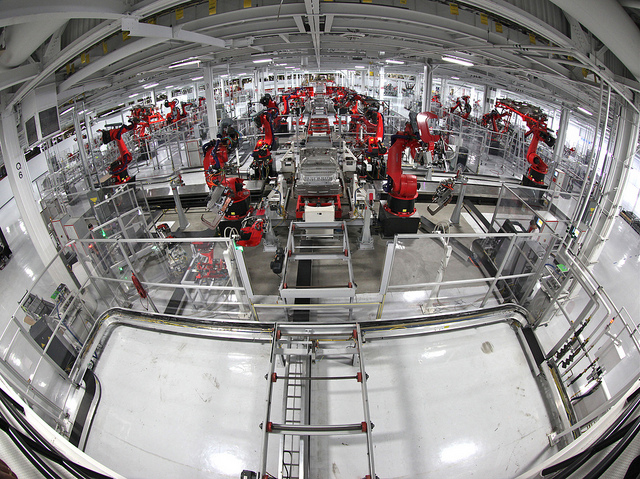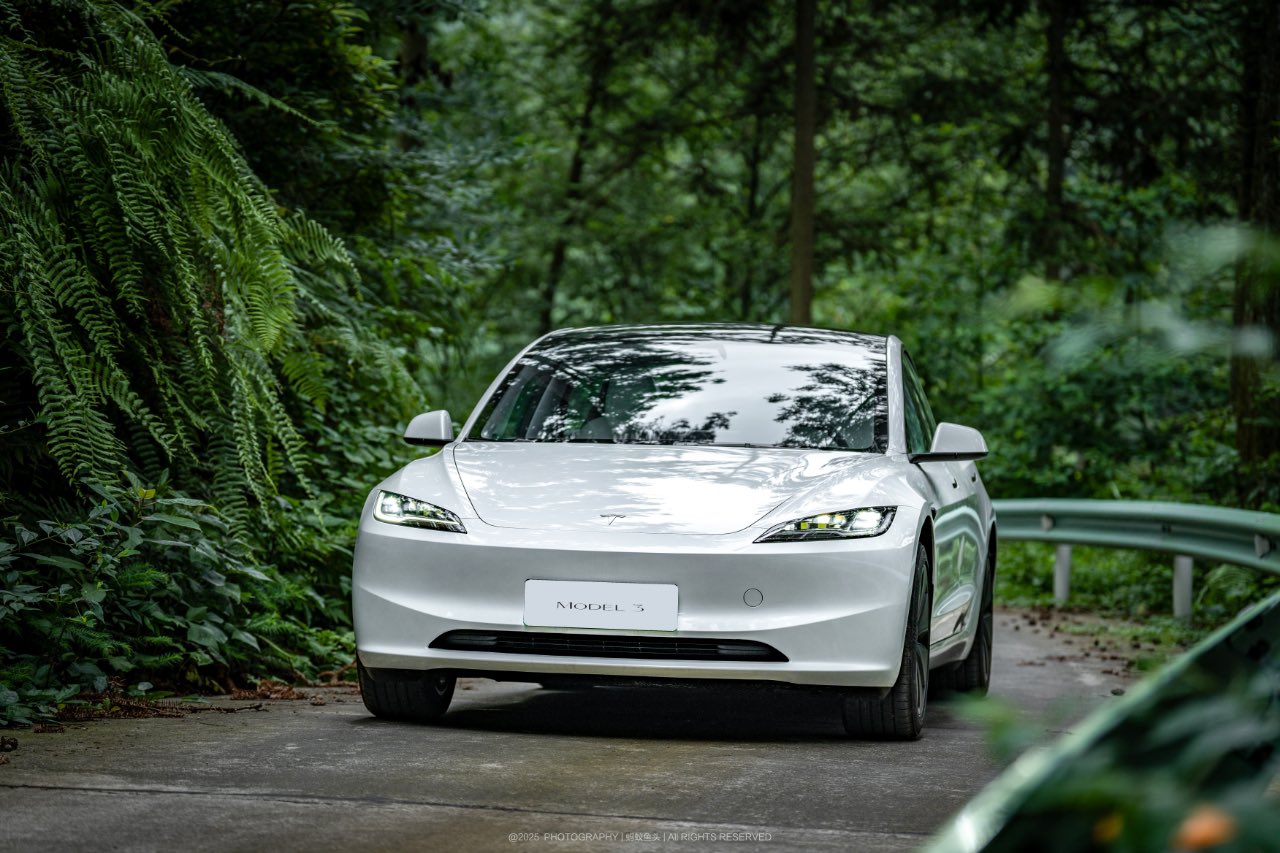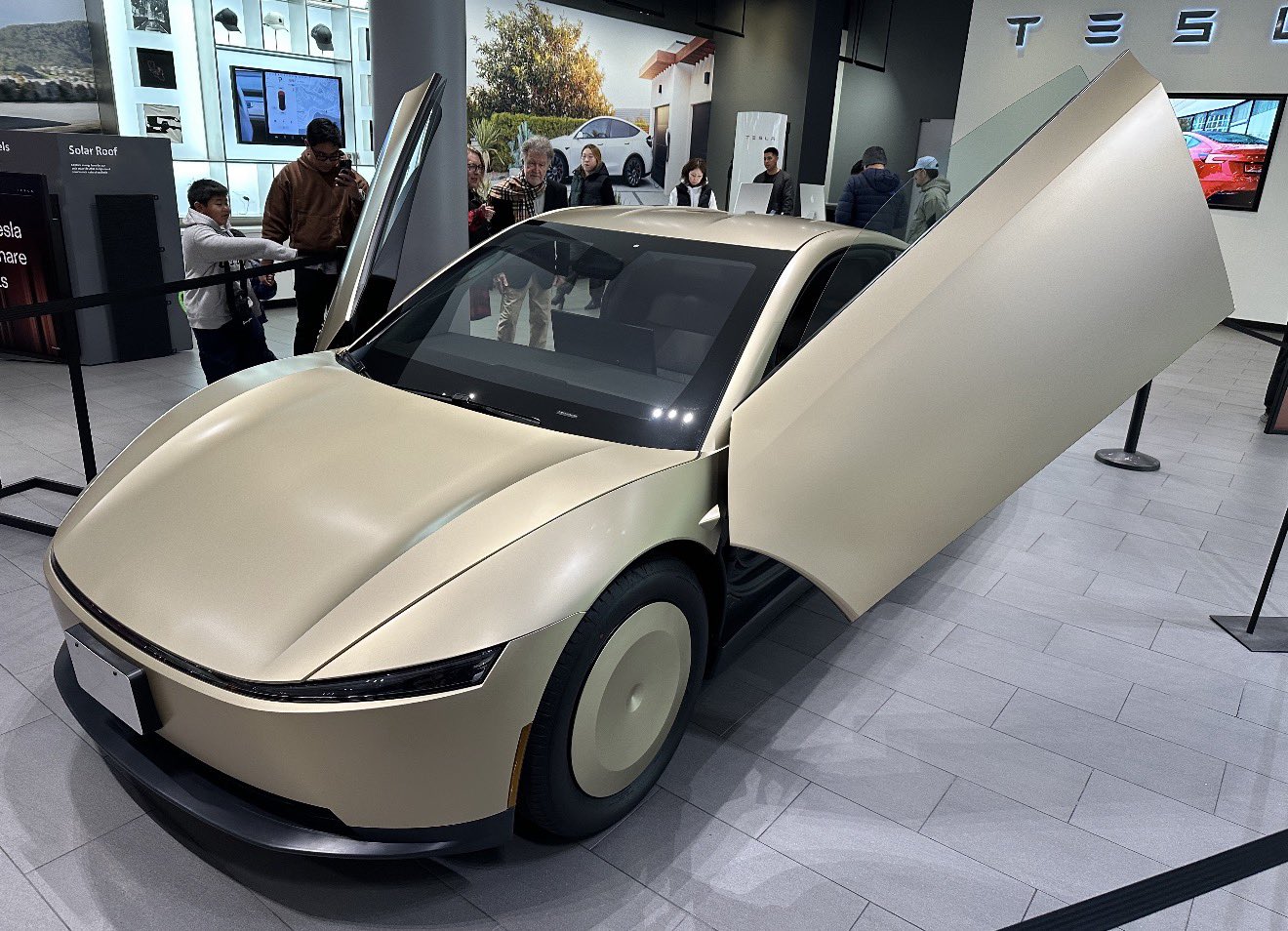News
Model 3 Delayed by Model X ‘Manufacturing’ Challenges?


Musk didn’t describe the Model X production challenges but the “real” answer may be battery range for a large, Model X. (Photo Credit: Steve Jurvetson)
11/20 Update: Looks like the two issues surrounding the Model X, heavy falcon wing doors and lack of battery range, have some pointing to BMW’s carbon fiber material, according to ValueWalk.
Tesla Motors earnings conference call provided some revelatory bits of information from Elon Musk and company, with one particular interesting item: the front electric motor in the new all-wheel drive Model S 85D could be in some shape or form in the Model 3 sedan.
(**Of note, Musk mentioned that there will be no more Performance 85 Model S without all the wheel-drivetrain; aids Tesla Motors manufacturing efficiency.)
Musk “seemed to indicate” that this new front motor in the all-wheel drive could be the prototype for the 2017 Model 3, mass-market electric car. This was in response to one analyst’s question on whether the delay with the Model X launch will affect the release and R&D for the Model 3 electric car?
But what about the Model X? What exactly are the challenges? Musk’s comment were pretty cryptic.
Musk says, “We could certainly—it would be quite easy for us to make one (Model X), a handful of production units that are saleable and don’t really move the needle. So, what really matters is at what point can we get to scale production of a really high quality car and that’s really in the third quarter. We also learned a lesson in manufacturing that you have issues that are sometimes one out of 100, but unless you make 100 of something, you don’t see it.”
A cautionary manufacturing approach is smart considering the very slow rollout of Model S sedans in 2012, but I’m not buying this “manufacturing” spin—though mainstream media has been. The non-answer seems to point to what Green Car Reports’s John Voelcker mentioned in late October: battery pack range issues for a really heavy SUV/crossover.
Musk mentioned that the Model X version is close to a “Beta version,” and let’s hope this is true. They need this car to be a success and provide much needed revenue, a bridge vehicle to the Model 3.
Just today, long-time value investor, Ron Baron, CEO of Baron Funds, says, “All of us will likely be Tesla customers in 25 years.” His reasoning is Tesla’s laser-beam focus on electric cars and head start on electric vehicle manufacturing, agains the muddled strategies by bigger automakers, excluding BMW.
Baron says, “As a result, they are developing electric expertise so slowly that the lead Tesla has built up through its fast growing staff … may soon become insurmountable.” So, maybe this dual-drive technology for the Model X and Model S 85D will pay off.
As an aside, make sure you read the Motor Trend article, “2015 Tesla Model S P85D First Test,” describing their road test with the Model S all-wheel drive Model S 85D. Love these prose gems from the article:
But scrambling to the same 60 mph time in the P85D bears no resemblance to that at all. With one transmission gear and no head-bobbing shifts, it’s instead a rail-gun rush down a quarter-mile of asphalt bowling lane. Nothing in the drivetrain reciprocates; every part spins. There’s no exhaust smell; the fuel is invisible. The torque impacts your body with the violence of facing the wrong way on the train tracks when the whistle blows. Within the first degree of its first revolution, 100 percent of the motors’ combined 687 lb-ft slams the sense out of you. A rising-pitch ghost siren augers into your ears as you’re not so much.

News
Another Tesla Model 3 variant sold out for January 2026 in China
A look at Tesla China’s order page shows that new Model 3 LR RWD orders now have an estimated delivery date of February 2026.

Another Tesla Model 3 variant in China appears to have sold out for January 2026, with the vehicle now showing an estimated delivery date of February 2026 for new orders. This bodes well for the all-electric sedan, which has maintained notable sales despite more affordable rivals like the Xiaomi SU7 and its crossover sibling, the Model Y.
Model 3 LR RWD joins February 2026 queue
A look at Tesla China’s order page for the all-electric sedan shows that new Model 3 Long Range Rear Wheel Drive orders now have an estimated delivery date of February 2026. Priced from RMB 259,500 ($36,810), the LR RWD sits as the second-lowest-priced trim in Tesla China’s four-variant Model 3 lineup. The move follows a similar delivery timeframe for the Model 3 Performance, which remains the most expensive option for the vehicle, as noted in a CNEV Post report.
The estimated delivery dates of the two remaining Model 3 variants remain unchanged for now. The base RWD version, starting at RMB 235,500, and the LR AWD variant, priced from RMB 285,500, both continue to list estimated delivery times of 4-6 weeks. Tesla China, for its part, has continued to list in-stock Model 3 vehicles and is actively encouraging buyers to select inventory units for delivery before the end of the year.
Model Y delays and policy shifts
Delivery timelines for the Model Y in China are also stretching into 2026. All customized Model Y variants now show February 2026 as their estimated delivery date, except for the entry-level version, which still lists January 2026. Tesla has been urging customers since November to prioritize purchasing inventory vehicles, a push aimed at maximizing year-end deliveries.
Timing matters for Chinese buyers due to upcoming changes in government incentives. China’s new energy vehicle purchase tax exemption will be scaled back in 2026, which means customers who take delivery next year could face higher tax costs compared to those who are able to receive vehicles before the end of the year.
As per data from the China Passenger Car Association, Tesla recorded retail sales of 73,145 vehicles in November, down 0.47% year over year. From January through November, Tesla’s retail sales in China totaled 531,855 units, a 7.37% year-over-year drop.
News
Wedbush’s Dan Ives sees ‘monster year’ ahead for Tesla amid AI push
In a post on X, the analyst stated that the electric vehicle maker could hit a $3 trillion market cap by the end of 2026 in a bullish scenario.

Wedbush analyst Dan Ives is doubling down on Tesla’s (NASDAQ:TSLA) long-term upside. In a post on X, the analyst stated that the electric vehicle maker could hit a $3 trillion market cap by the end of 2026 in a bullish scenario, thanks to the company’s efforts to develop and push its artificial intelligence programs.
An aggressive valuation upside
Ives, Wedbush’s global head of tech research, stated in his post that Tesla is entering a pivotal period as its autonomy and robotics ambitions move closer to commercialization. He expects Tesla’s market cap to reach $2 trillion in 2026, representing roughly 33% upside from current levels, with a bull case up to a $3 trillion market cap by year-end.
Overall, Ives noted that 2026 could become a “monster year” for TSLA. “Heading into 2026, this marks a monster year ahead for Tesla/Musk as the autonomous and robotics chapter begins. We believe Tesla hits a $2 trillion market cap in 2026 and in a bull case scenario $3 trillion by end of 2026… as the AI chapter takes hold at TSLA,” the analyst wrote.
Ives also reiterated his “Outperform” rating on TSLA stock, as well as his $600 per share price target.
Unsupervised Full-Self Driving tests
Fueling optimism is Tesla’s recent autonomous vehicle testing in Austin, Texas. Over the weekend, at least two Tesla Model Ys were spotted driving on public roads without a safety monitor or any other occupants. CEO Elon Musk later confirmed the footage of one of the vehicles on X, writing in a post that “testing is underway with no occupant in the car.”
It remains unclear whether the vehicle was supported by chase cars or remote monitoring, and Tesla has not disclosed how many vehicles are involved. That being said, Elon Musk stated a week ago that Tesla would be removing its Safety Monitors from its vehicles “within the next three weeks.” Based on the driverless vehicles’ sightings so far, it appears that Musk’s estimate may be right on the mark, at least for now.
News
Production-ready Tesla Cybercab hits showroom floor in San Jose
Tesla has implemented subtle but significant updates to both the Cybercab’s exterior and interior elements.

Tesla has showcased what appears to be a near-production-ready Cybercab at its Santana Row showroom in San Jose, California, giving visitors the closest look yet at the autonomous two-seater’s refined design.
Based on photos of the near-production-ready vehicle, the electric vehicle maker has implemented subtle but significant updates to both the Cybercab’s exterior and interior elements, making the vehicle look more polished and seemingly more comfortable than its prototypes from last year.
Exterior and interior refinements
The updated Cybercab, whose photos were initially shared by Tesla advocate Nic Cruz Patane, now features a new frameless window design, an extended bottom splitter on the front bumper, and a slightly updated rear hatch. It also includes a production-spec front lightbar with integrated headlights, new wheel covers, and a license plate bracket.
Notably, the vehicle now has two windshield wipers instead of the prototype’s single unit, along with powered door struts, seemingly for smoother opening of its butterfly doors. Inside, the Cybercab now sports what appears to be a redesigned dash and door panels, updated carpet material, and slightly refined seat cushions with new center cupholders. Its legroom seems to have gotten slightly larger as well.
Cybercab sightings
Sightings of the updated Cybercab have been abundant in recent months. At the end of October, the Tesla AI team teased some of the autonomous two-seater’s updates after it showed a photo of the vehicle being driven through an In-N-Out drive-through by employees in Halloween costumes. The photos of the Cybercab were fun, but they were significant, with longtime Tesla watchers noting that the company has a tradition of driving its prototypes through the fast food chain’s drive-throughs.
Even at the time, Tesla enthusiasts noticed that the Cybercab had received some design changes, such as segmented DRLs and headlamps, actual turn signals, and a splitter that’s a lot sharper. Larger door openings, which now seem to have been teasing the vehicle’s updated cabin, were also observed at the time.








